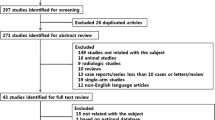Abstract
Background
Since the issue of breast implant-associated anaplastic large cell lymphoma, smooth breast implants tend to be the more preferred option in implant-based breast reconstructions, compared to its use previously. The most unfavorable aspect of smooth implants is lateral and inferior displacements, which are more common in patients who undergo breast reconstruction compared to augmentation mammoplasty. Hence, we introduce a prevention method for implant displacement using an acellular dermal matrix garter belt.
Methods
This study is a retrospective review of patients who had undergone implant-based breast reconstruction between April 2019 and December 2020. Some patients who have highly possibility of implant displacement, had undergone the application of an ADM garter belt to prevent lateral or superior displacement. Implant displacement was assessed before and at least 6 months postoperatively.
Results
A total of 155 IBR cases were recorded. ADM garter belts were applied in 27 patients (17.4%) who had a high tendency of implant displacement for several reasons, which could be classified into two categories: wide breast pocket (56%) and tight inferomedial breast pocket (44%). The intraoperative average distance of lateral slip** on patients’ reconstructed breasts from the chest wall midline in supine position was 3.02 ± 0.81 cm and corrected to1.54 ± 0.69 cm at least 6 months postoperative follow-up.
Conclusions
We utilized an ADM strap as an internalized garter belt to minimize implant displacement. This ADM garter belt combined with capsuloplasty might be an effective way to prevent the displacement of smooth implants in the patients with a greater risk of implant displacement.
Level of Evidence IV
This journal requires that authors assign a level of evidence to each article. For a full description of these Evidence-Based Medicine ratings, please refer to the Table of Contents or the online Instructions to Authors www.springer.com/00266





Similar content being viewed by others
References
Swanson E (2020) The food and drug administration bans Biocell textured breast implants: lessons for plastic surgeons. Ann Plast Surg 84:343–345
Food U, Administration D. The FDA requests Allergan voluntarily recall Natrelle BIOCELL textured breast implants and tissue expanders from the market to protect patients: FDA safety communication. 2019
Zingaretti N, Galvano F, Vittorini P et al (2019) Smooth Prosthesis: our experience and current state of art in the use of smooth sub-muscular silicone gel breast implants. Aesthetic Plast Surg 43:1454–1466
Buonomo OC, Morando L, Materazzo M et al (2020) Comparison of round smooth and shaped micro-textured implants in terms of quality of life and aesthetic outcomes in women undergoing breast reconstruction: a single-centre prospective study. Updat Surg 72:537–546
Hedén P, Montemurro P, Adams W et al (2015) Anatomical and round breast implants: how to select and indications for use. Plast Reconstr Surg 136:263–272
Calobrace MB, Schwartz MR, Zeidler KR et al (2017) Long-term safety of textured and smooth breast implants. Aesthet Surg J 38:38–48
DeCoster RC, Lynch EB, Bonaroti AR et al (2021) Breast implant-associated anaplastic large cell lymphoma: defining future research priorities. Clin Plast Surg 48:33–43
Brown MH, Somogyi RB, Aggarwal S (2016) Secondary breast augmentation. Plast Reconstr Surg 138:119e–135e
Shestak KC (2011) Acellular dermal matrix inlays to correct significant implant malposition in patients with compromised local tissues. Aesthet Surg J 31:85s–94s
Fracol M, Qiu CS, Chiu WK et al (2020) Lateral and Inferior Implant Malposition In Prosthetic Breast Reconstruction: Incidence And Risk Factors. Plast Reconstr Surg Glob Open 8:e2752
Chasan PE (2005) Breast capsulorrhaphy revisited: a simple technique for complex problems. Plast Reconstr Surg 115:296–301
Chasan PE, Francis CS (2008) Capsulorrhaphy for revisionary breast surgery. Aesthet Surg J 28:63–69
Johnson JD, Oven SD, Skalicky RJ (2018) A novel technique for treatment of recurrent capsular contracture using acellular dermal matrix in aesthetic revisional breast surgery. Am J Cosmet Surg 36:7–14
Duncan DI (2001) Correction of implant rippling using allograft dermis. Aesthet Surg J 21:81–84
Breuing KH, Warren SM (2005) Immediate bilateral breast reconstruction with implants and inferolateral AlloDerm slings. Ann Plast Surg 55:232–239
Spear SL, Parikh PM, Reisin E et al (2008) Acellular dermis-assisted breast reconstruction. Aesthetic Plast Surg 32:418–425
Namnoum J, Moyer H (2012) The role of acellular dermal matrix in the treatment of capsular contracture. Clin Plast Surg 39:127–136
Woo A, Harless C, Jacobson SR (2017) Revisiting an old place: single-surgeon experience on post-mastectomy subcutaneous implant-based breast reconstruction. Breast J 23:545–553
Yang JY, Kim CW, Lee JW et al (2019) Considerations for patient selection: prepectoral versus subpectoral implant-based breast reconstruction. Arch Plast Surg 46:550–557
Arquero P, Zanata F, Ferreira L et al (2015) Capsular weakness around breast implant: a non-recognized complication. World J Plast Surg 4:168–174
Acknowledgement
The authors appreciate Medical Art Studio (Sun-Joo Kim) for the preparation of the excellent illustrations and graphic design.
Author information
Authors and Affiliations
Corresponding author
Ethics declarations
Conflict of interest
All authors confirm that there are no conflict of interest.
Ethical Approval
This study was conducted following the approval of the CHA University Bundang CHA Medical Center Institutional Review Board (IRB No. 2021-07-059).
Informed Consent
Informed consent was obtained from all participants.
Additional information
Publisher's Note
Springer Nature remains neutral with regard to jurisdictional claims in published maps and institutional affiliations.
Supplementary Information
Below is the link to the electronic supplementary material.
Rights and permissions
About this article
Cite this article
Ha, H.J., Jeong, S.H., Yang, J.Y. et al. Prevention of Breast Implant Displacement Using the Acellular Dermal Matrix Garter Belt. Aesth Plast Surg 46, 1042–1049 (2022). https://doi.org/10.1007/s00266-021-02665-x
Received:
Accepted:
Published:
Issue Date:
DOI: https://doi.org/10.1007/s00266-021-02665-x




